Ignition Checkout - 01/16/2015
I decided I needed to fire up the car and get the battery charging. Turns out it wouldn't start at all. I hadn't driven it since I parked it in the driveway right after coming back from the exhaust shop, so something had to have gone wrong. Suspecting the ignition system, I ended up pulling out my engine analyzer to verify that the ignition circuitry was firing properly. I found that the points were like new, the cap and rotor were corroded (but now cleaned up) and the springs\weights were good. Ultimately the car was out of gas - like completely bone dry tank. I can't possibly have gotten extremely lucky and driven 30 miles home to just run out of gas when idling back into the parking spot, so I've either got a severe leak on the fuel line somewhere, a REALLY bad carb situation (Cliff's kit is on the bench ready to go in), or someone siphoned out the gas in my tank at the exhaust shop. I'll have to get the gas gauge working again, but that's an update for another day when the weather finally gets nice again.
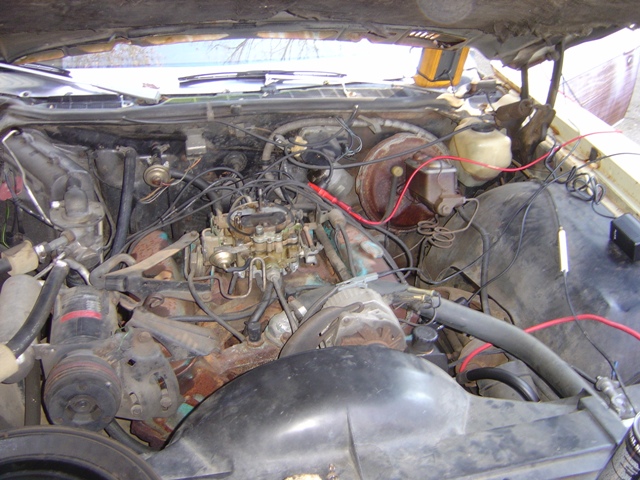
Setting up the analyzer. Coil negative and #1 spark plug are the connections. I had to fill the bowl on the carb 3 times before I figured it out...
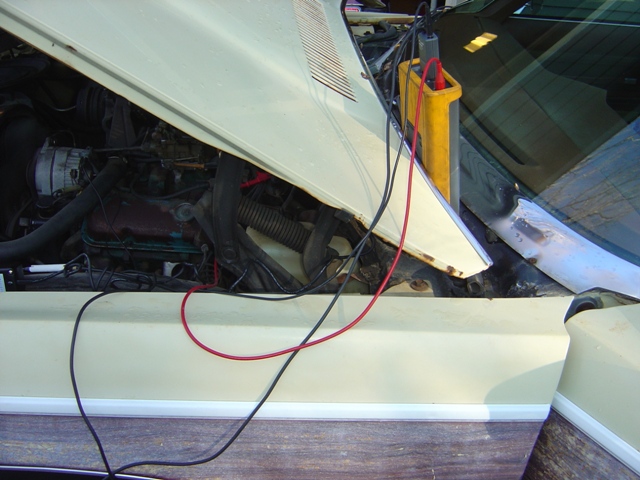
Engine analyzer on the hood for viewing while cranking.
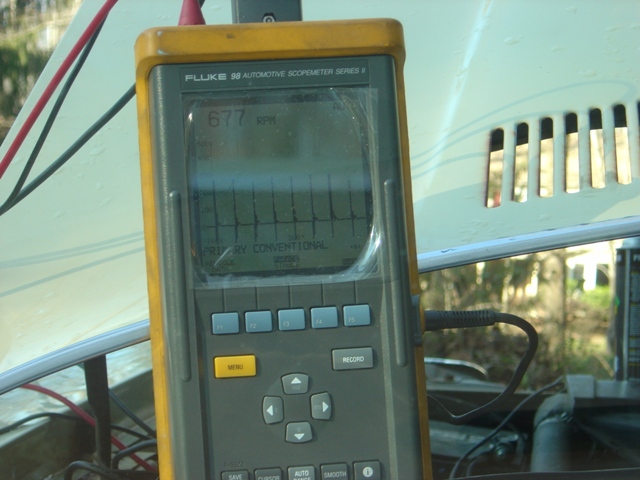
I could get it to crank at 150RPM and see all 8 cylinders are firing, but it wouldn't fire. Cleaned up distributor (no pictures because I was lazy and it was cold) and put it all back together. Still no fire. Fuel in bowl, ran until it died right here!
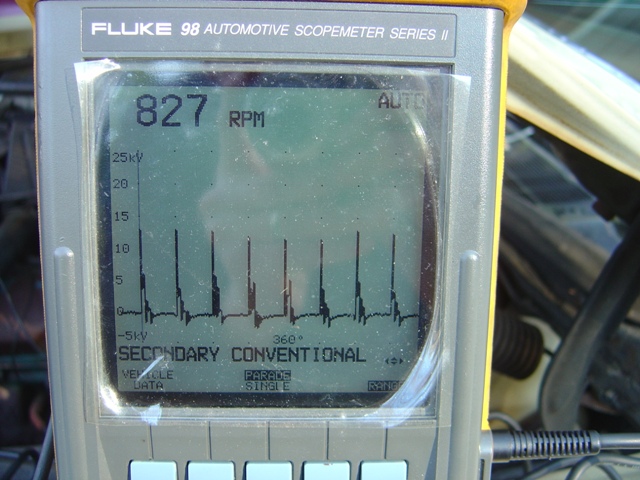
Dump half a gallon of gas in the tank ("can't possibly be out of gas...") and lo and behold it fired up...
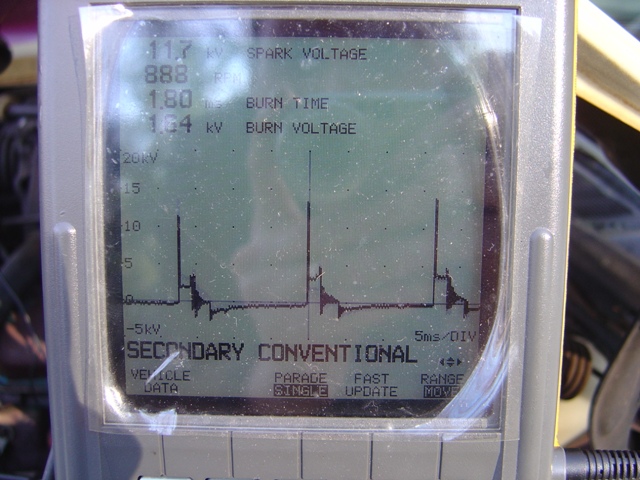
Decided to check out the health of my cylinders. This is #1.
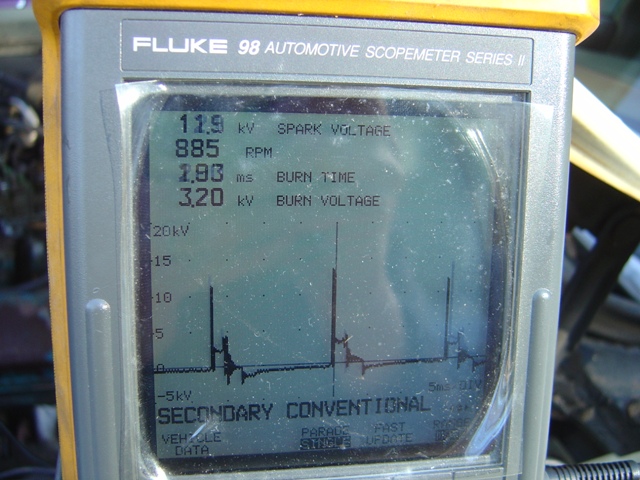
This is #3.
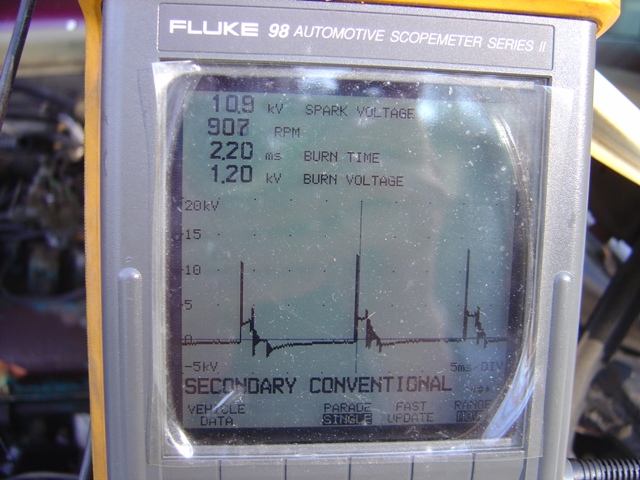
This is #5.
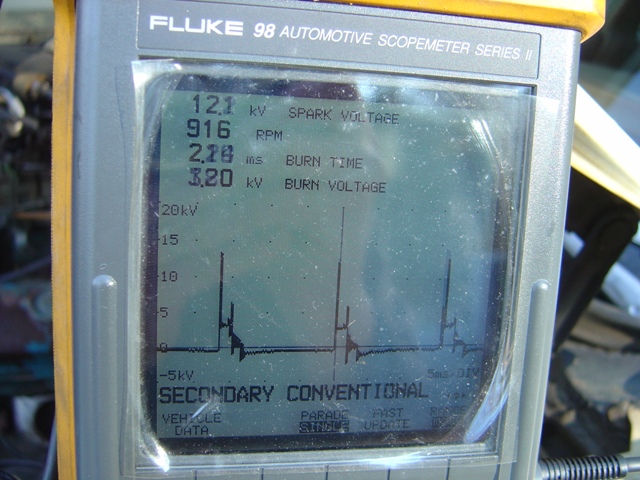
This is #7.
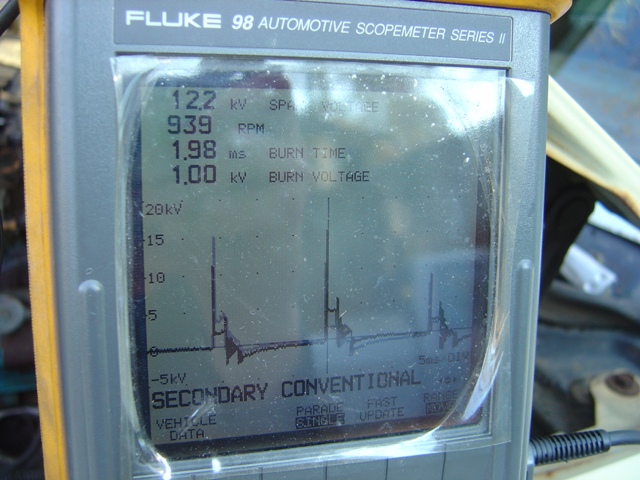
This is #2.
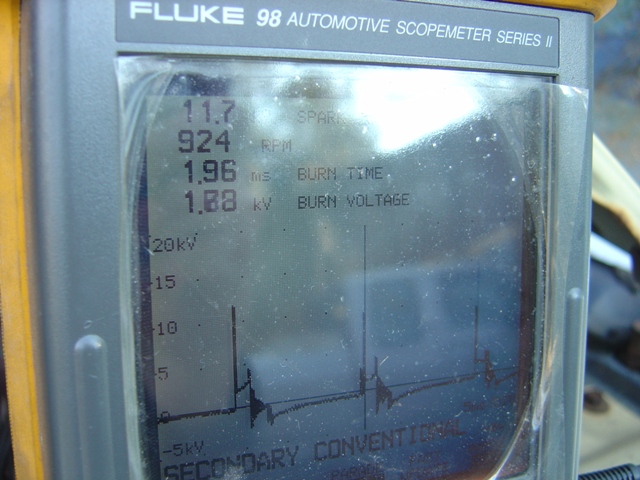
This is #4.
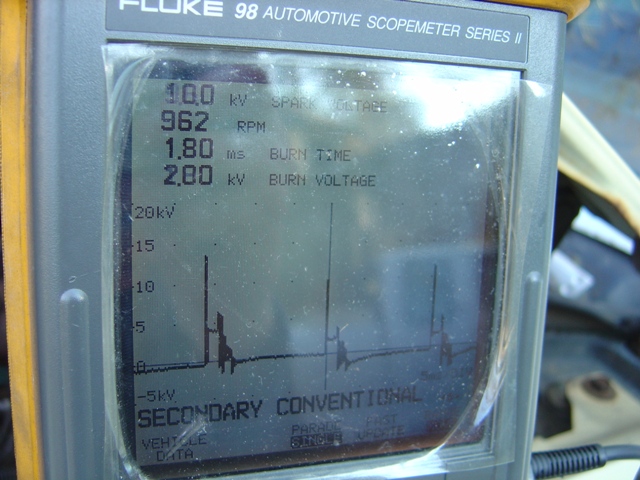
This is #6.
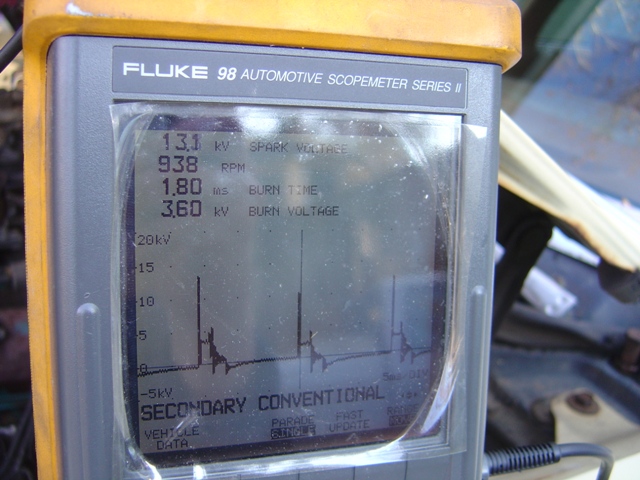
This is #8. Everything looks pretty consistent with no major breakdowns or anyone higher or lower by any extreme, which is good news. You can see the engine warmed up with the choke still set slightly and the RPM went up 100 or so over the 10 minutes of testing... until it ran out of gas ("I really am out of gas!").
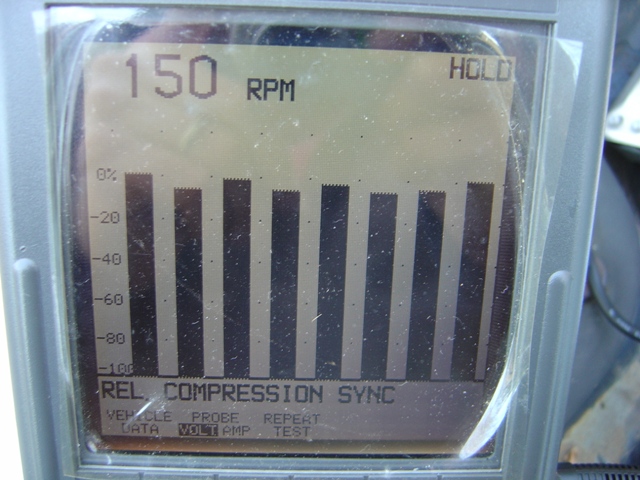
Since I had no gas, I decided to do a relative compression test synchronized on the engine. Hook it up with a filter, crank for 6 seconds without firing, and the analyzer will give you an approximation of all 8 cylinders and their cranking compression respective to each other. It's pretty neat. Shows that 3 cylinders are roughly a little less than 10% from the maximum, which implies the engine does not have any dead cylinders.
Granted a real compression test is in order, as is a timing gun to determine initial advance and vacuum advance and mechanical advance, but baby steps are in order. It's supposed to be warmer this weekend and I can drop the tank to fix the sending unit and put the timing gun on it then, same with the actual compression test.
Return to 1973 Grand Safari
Last updated January 16th, 2015